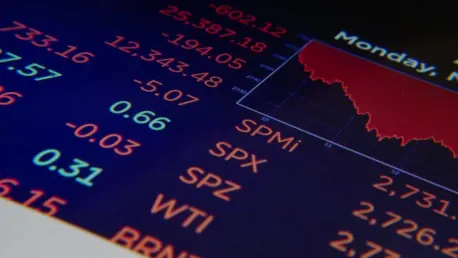The thin trading period following the Christmas holiday has led to mixed performances across Asian shares and global stock markets, illustrating varied market reactions and investor sentiments post-festivities. While Japan experienced a notable surge, other regions such as South Korea and Taiwan showed more modest movements in comparison. The markets in several key countries, including Hong Kong and Australia, remained shut, contributing to the overall thin trading environment observed globally.
Japan’s Market Performance Boosted by Retail and Tourism Stocks
Japanese Nikkei 225 Index Sees Significant Gains
Japan’s Nikkei 225 index soared 1.1% to 39,568.06, a move largely attributed to the robust performance of retail and tourism stocks. The Japanese government’s move to ease visa conditions for Chinese tourists significantly buoyed the market, enabling major retailers to capitalize on the anticipated surge in consumer spending. Isetan Mitsukoshi Holdings led the charge with a rapid 7.7% rise, while J. Front Retailing Co. experienced an even more impressive 8.3% increase. This targeted policy change by the government aimed to revive the retail and tourism sectors, demonstrating a strategic approach to leveraging foreign tourist spending potential.
Adding to the market’s positivity, automakers in Japan also recorded notable gains. This upswing in the automotive sector contributed to the broader market rally, reflecting investor confidence in the industry’s resilience and potential for growth. Additionally, the announced discussions on security issues between Japan and China indicated a possible easing of bilateral tensions, further bolstering investor sentiment. The combination of favorable government policies, strong sector performances, and diplomatic developments helped drive the Nikkei 225 index to substantial gains during the thin trading period post-Christmas.
Impact on Retail and Tourism Stocks in Japan
The easing of visa conditions for Chinese tourists by the Japanese government served as a catalyst for the boom in the retail and tourism sectors. Major retailers, anticipating increased consumer footfall and spending, witnessed significant upticks in their stock prices. This policy intervention was a strategic measure to rejuvenate these critical sectors of the economy, particularly critical in a period marked by generally subdued trading volumes. Investors responded positively to Isetan Mitsukoshi Holdings’ 7.7% leap, seeing it as a harbinger of sustained consumer spending power.
On the automotive front, Japanese automakers enjoyed a concurrent lift, adding another layer of optimism to the market’s performance. The potential softening of security tensions between Japan and China likely contributed to this sector’s gains, providing a conducive environment for smoother cross-border trade relations. With bilateral discussions on security issues planned, investors interpreted these diplomatic moves as a signal of potential stabilization and improved economic cooperation. This broader favorable environment, coupled with targeted policy measures, worked synergistically to elevate Japan’s stock market performance during the post-Christmas period.
Mixed Results in Other Asian Markets
South Korea and Taiwan Performance
Contrasting Japan’s robust market performance, South Korea’s Kospi index dropped by 0.4% to 2,429.67, highlighting the divergent market responses in the region. This decline underscored the cautious investor sentiment and specific sectoral weaknesses affecting the South Korean market. Meanwhile, Taiwan’s Taiex index saw a modest increase of 0.1%, showcasing relative stability amid the thin trading conditions. The mixed results reflected the varied economic fundamentals and market dynamics at play across different Asian economies.
Furthermore, South Korea’s economic landscape experienced distinct challenges, contributing to the Kospi index’s decline. Investors remained wary of potential headwinds, including geopolitical tensions and domestic economic uncertainties. In contrast, Taiwan’s economic resilience was supported by stable industrial performance and investor confidence in its tech-heavy market. These differences highlighted the nuanced market reactions within the region, shaped by localized economic factors and investor outlooks.
Shanghai and Thailand Market Movements
In China, the Shanghai Composite index inched up by 0.1% to 3,398.08, mirroring Taiwan’s minor positive movement. This slight uptick reflected cautious optimism among investors, balancing between persistent economic concerns and potential recovery signals in the market. On the other hand, Thailand’s SET index experienced a marginal decline of 0.1%, illustrating the nuanced market environment. The variability in the performances of these indices represented the intricate interplay of regional economic conditions and post-holiday trading dynamics.
Despite the overall modest movement, China’s market remained sensitive to ongoing economic policies and developments. Investors kept a close eye on governmental measures aimed at sustaining growth and managing the economic impact of the pandemic. In Thailand, market participants appeared to adopt a more reserved approach, potentially influenced by regional economic factors and the post-holiday trading lull. The divergence in performance within these markets highlighted the complex factors influencing investor behavior in the thin trading period post-Christmas.
U.S. Market Trends and Historical Patterns
Performance of U.S. Stock Futures and Market Indices
In the United States, stock futures for the S&P 500 and the Dow Jones Industrial Average saw slight downturns of 0.2% following the closure of markets on Christmas day. Despite this minor setback, U.S. markets had previously enjoyed a “Santa rally,” characterized by significant contributions from Big Tech stocks. The S&P 500 rose by 1.1%, the Dow Jones Industrial Average by 0.9%, and the Nasdaq Composite by 1.3%. These movements reflected investor confidence and the positive end-of-year momentum traditionally observed in U.S. markets.
The rally, bolstered by gains in technology stocks, provided a strong finish for the year, even as markets prepared for potential uncertainties ahead. U.S. benchmark crude oil prices also saw modest gains, with prices for both crude oil and Brent crude rising. The convergence of optimistic market performance and encouraging sector-specific gains helped sustain the overall positive sentiment in U.S. markets during the thin trading period. However, underlying concerns remained regarding policy shifts and economic impacts under the incoming administration.
Historical Year-End Gains and Future Outlook
A historical pattern has shown that the end of the year typically yields positive results for U.S. markets, with an average gain of 1.3% since 1950 during the last five trading days of the year and the first two of the new year. This year followed the trend despite some post-election losses. The S&P 500 remained up by 26.6% for the year, approaching its all-time high. These historical trends underscored the resilience of the U.S. markets, reflecting long-term investor confidence even amid short-term fluctuations.
However, investors were cautious about potential challenges under President-elect Donald Trump’s administration. Policies poised to increase inflation, boost government debt, and affect global trade kept market participants vigilant. While the markets showed resilience, the new administration’s policies could introduce new dynamics, potentially altering established market trends. Future market performance will likely hinge on how these policies unfold and their broader economic impacts, keeping investors on edge during the transition period.
Conclusion
The period of thin trading following the Christmas holiday has resulted in a mixture of performances in Asian shares and global stock markets, highlighting diverse market reactions and investor sentiments in the post-holiday season. Japan’s market saw a significant surge, contrasting with more modest movements in South Korea and Taiwan. This disparity in market activity reflects varying degrees of investor confidence and market dynamics in the region. Meanwhile, key financial hubs like Hong Kong and Australia were closed, contributing to the overall thin trading environment observed globally. The closure of these significant markets underscores the impact holiday periods can have on global trading volumes and market behaviors. Investors are often cautious during such times, leading to reduced trading activity and mixed market outcomes. The varied performances post-Christmas indicate the complex and multifaceted nature of global financial markets, where regional factors and holiday schedules can significantly influence overall trends and investor actions. The past week’s performances underscore the interconnectedness of global markets and how regional developments can leave a marked imprint on overall trading environments.









